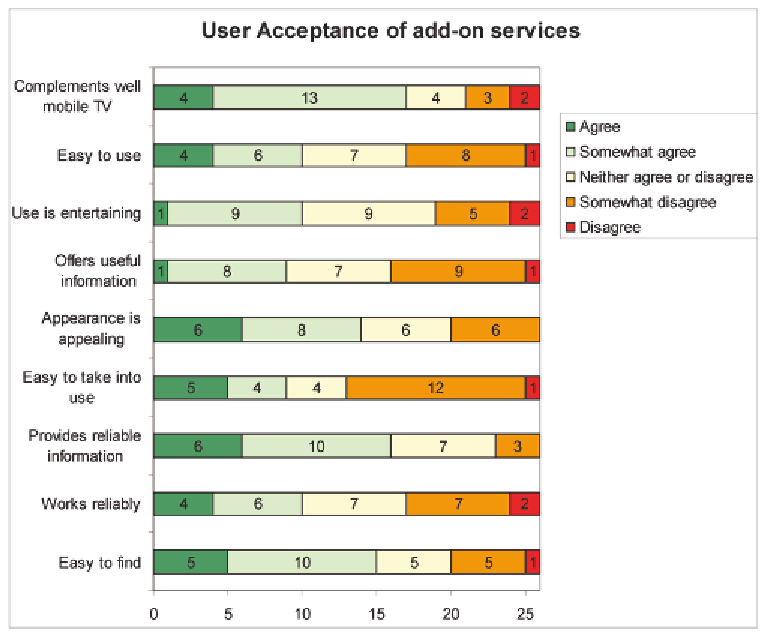Information Technology Reference
In-Depth Information
Figure 11. User acceptance of mobile TV add-on services
and the communication between the phone and
the tags. Parallel to the technical development,
we were studying the interaction concepts related
to ubimedia.
A memory tag may include gigabytes of
memory, thus facilitating local storage of media
files. The user can access this kind of ubimedia
with his/her mobile phone just by touching the
memory tag. The concept facilitates easy access
to media related to physical objects: for instance,
music files can be provided as a bonus on a con-
cert ticket or a movie trailer can be downloaded
from a movie poster. The users can access the
content but they can also take the content with
them on their personal mobile devices. This fea-
ture is different from locally installed ubiquitous
media services such as embedded large screens
with significantly lower requirements on the lo-
cal infrastructure (memory tags vs. large public
screens). Writeable memory tags also extend the
application possibilities as users can themselves
produce content to memory tags. This facilitates,
for instance, attaching messages on digital objects
as digital post-it notes or social ubimedia where
people can interact with each other and share
content via actual physical environments. The
difference with data stored locally on a memory
tag compared to a more traditional technique of
storing just a link to the data in a common RFID
tag is that the transfer speed of a memory tag is
higher by orders of magnitude and it does not
burden the network.
We studied user acceptance of ubimedia
with two proofs-of-concept. The first of them,
Readable memory tag, demonstrated reading or
downloading contents (video) from the memory

Search WWH ::

Custom Search